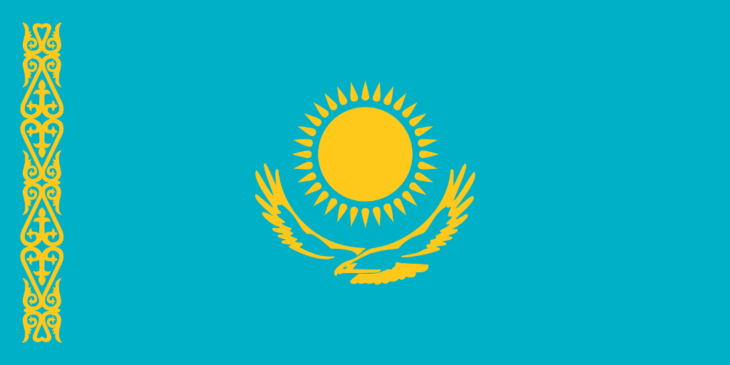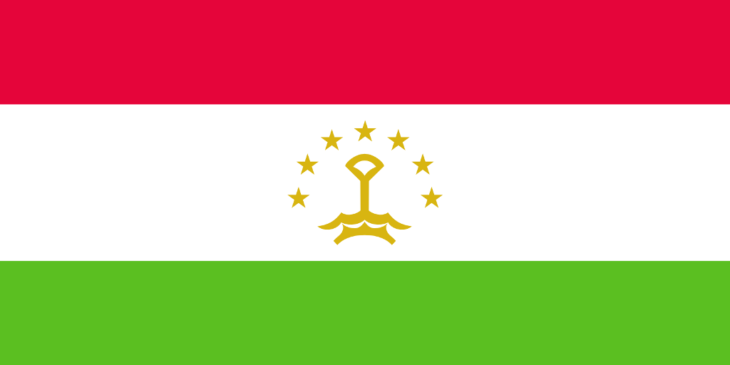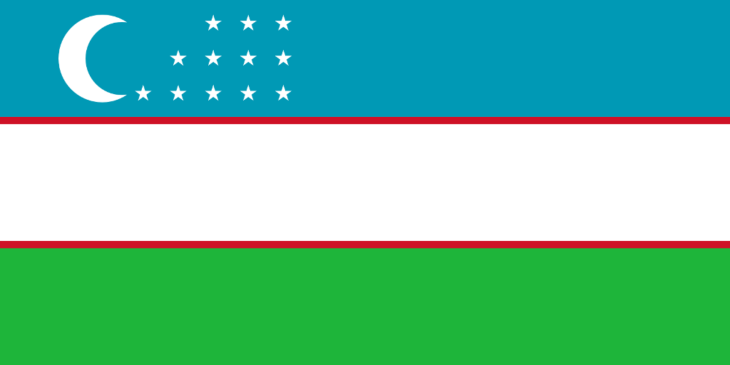KAZAKHSTAN
According to Countryaah, Kazakhstan is a country located in Central Asia. In Kazakhstan, there is both an old trade union structure and a new independent trade union movement. The old movement, the Federation of Trade Unions of the Republic of Kazakhstab (FTUK), has not been significantly affected by the political changes of the last five years and in reality functions as part of the state apparatus.
The independent trade union movement is weak and consists mainly of the Independent consists of the Trade Union Center of Kazakhstan, ITUCK, and the mining union Independent Mineworkers Trade Union, IMTU. ITUCK organizes, among other things, gas workers and employees in the manufacturing industry. No trade union is a member of the International Trade Union Confederation (IFS).
In the spring of 2017, Nurbek Kushekbaev, President of the ITUCK, was sentenced to 2.5 years in prison. He is accused of announcing a strike. The international trade union movement has protested against the verdict and against the anti-union repression in the country.
Unions
The Federation of Trade Unions of the Republic of Kazakhstan (FTUK) and the Independent consist of the Trade Union Center of Kazakhstan, (ITUCK), and the Mining Union of the Independent Mineworkers Trade Union, IMTU. ITUCK organizes, among other things, gas workers and employees in the manufacturing industry. No trade union is a member of the World Trade Union ITUC.
KYRGYZSTAN
The Kyrgyz National Trade Union Confederation (KNFC) is an extension of the old trade union structure. However, some reform has taken place, a trade union program and new statutes have been adopted. KNFC considers itself independent of the state and political parties. In reality, however, the state exercises strong control over the KNFC.
KNFC belongs to the General Confederation of Trade Unions, VKP, and belongs to the Communist Trade Union International, FVF. At present, the KNFC has 900,000 individual members divided into 28 affiliates. The largest unions organize farm workers, teachers, health care workers, employees in the service professions, public employees and textile workers.
Unions
Central trade unions : Kyrgyz National Trade Union Confederation (KNFC). There is no trade union organization in the country that belongs to the World Trade Union ITUC.
TAJIKISTAN
There is no independent trade union movement in the country and what existed of the old trade union structures, the Tajikistan Federation of Trade Unions (TFTU), has been weakened due to the previous civil war. The state-controlled trade union movement states that it has 1.5 million members and is affiliated with the General Confederation of Trade Unions, VKP. For employees in industry and the public sector, it is in principle mandatory to be a member of the union.
Unions
Central trade union organization: The country’s only trade union movement: Tajikistan Federation of Trade Unions (TFTU). TFTU is not a member of the World Trade Union ITUC.
TURKMENISTAN
Turkmenistan is one of 5 countries in Central Asia. There is only one trade union structure in the country, the state-controlled movement National Center of Trade Unions of Turkmenistan (NCTUT). NCTUT reports that the organization has 1.3 million members. In principle, it is mandatory for employees to join a union. NCTUT belongs to the General Confederation of Trade Unions, VKP. There is a systematic repression of all opposition in the country, which has also prevented the emergence of an independent trade union movement. Freedom of the press is restricted and mass meetings and demonstrations are prohibited.
Unions
The country’s only permitted trade union organization is: National Center of Trade Unions of Turkmenistan NCTUT. There is no member of the ITUC World Trade Union in the country.
UZBEKISTAN
The country’s only trade union organization is the Federation of Trade Unions of Uzbekistan (FTUU), a direct continuation of the former communist trade union movement and still controlled by the state. The reform of the trade union movement is non-existent. Independent trade unions are not allowed.
Unions
Trade unions: Federation of Trade Unions of Uzbekistan (RTD). There are no organizations in the country that belong to the World Trade Union ITUC.
CHINA
According to the Chinese Constitution, “freedom of association” prevails in the country. In reality, all organizations that threaten to play an independent role are either tightly controlled or banned. This also applies to the trade union movement. The only organization allowed to work openly is the All-China Federation of Trade Unions, ACFTU. The leadership of the ACFTU is in effect appointed by the Chinese Communist Party. According to a decision by the Communist Party, the ACFTU’s task will be to “mobilize workers for the country’s development”, the implicit meaning is that the union should not take action against employers to try to improve wages and working conditions. A similar wording is found in the ACFTU’s own constitution, which states that the organization’s task is to constitute a “bridge between the Communist Party and the working masses”.
The ACFTU unions are mainly structured according to the industry union principle, with one union for each workplace. Employees of foreign companies in China have the right to form trade unions, provided that they join the ACFTU. At the same time, ACFTU lacks experience of union work in privately owned companies. Despite the authorities’ disapproval, however, the number of strikes has increased sharply in recent years. In particular, the militancy of workers has increased in the economically expansive areas of southern China. When strikes have occurred, ACFTU’s role has been to try to motivate employees to return to work. ACFTU has no right to call for a strike.
Several attempts have been made to form independent trade unions alongside the ACFTU. One of these organizations, the Workers’ Autonomous Federation, AAF, emerged as part of the democracy movement that emerged in Beijing in the spring of 1989. After the Tiananmen Square massacre in June, the AAF was banned and the organization’s founder Han Dongfang was imprisoned.
In some cases, members and local unions within the ACFTU have acted contrary to the Communist Party. Especially in northeastern China, in the so-called rust belt, workers have protested against large cuts and the fact that unemployed employees have not received any severance pay. In all cases, such protests have been suppressed with severe repression by the Chinese state and those considered to be the leaders of the protests have been imprisoned. The most well-known case is the imprisonment of local ACFTU representatives Yao Fuxin and Xiao Yunling in the city of Liaoyang in 2002. In that case, the protesting workers opposed the denial of pensions and medical care to employees in connection with a drastic reduction while the company’s director looted of the company’s profits. Xiao Yunling was released in 2008. Yao Fuxin was released seriously ill from prison in March 2009.
Strikes have also become more common in other parts of China. The strikes in Guangdong province in southern China are particularly widespread. Just around the Pearl River Delta, which is one of the country’s most industrialized areas, a new strike begins every day. Dissatisfaction applies to cuts and low wages. Several of the strikes have taken place at facilities run by large transnational companies or at important supplier companies. The strikes at Honda’s factory and at Foxconn, which is, among other things, a supplier to Apple, have created a great deal of attention in the outside world, especially due to workers committing suicide in protest against the company’s irreconcilable attitude. The unrest in Guangdong province has forced the government to make major concessions,
ACFTU finds it difficult to find a role for foreign companies and difficult to motivate the workforce to organize, which has led to a drastic membership race. This has paved the way for new legislation that makes trade unions mandatory for all companies. Even at the foreign companies in the country, there must today be local trade union activities within the framework of ACFTU. If the employees do not take the initiative for the organization, it is the employer’s responsibility to ensure that they are organized. In reality, however, trade union activity is still weak at foreign companies. Many employees are not even aware that they are members of a trade union
In Guangdong Province in southern China, there are also embryos for autonomous employee organizations. One of the most famous is the Chinese Working Women Network (CWWN). But in addition, there are several other NGOs and networks. Their strategy is above all to act as legal advisers for employees who have suffered. In that endeavor, they are trying to use the prevailing Chinese law. Despite this seemingly harmless attitude, these law centers have been attacked several times by security police, premises have been destroyed and leading representatives arrested. In recent years, the authorities have intensified repression against these independent organizations. In the city of Shenzhen alone, nine “workers’ NGOs” have been forced to close their offices.
Both for the workers who are trying to develop autonomous organizations and those who use ACFTU as a basis for negotiations and pressure, the internet is playing a growing role. The government’s ambition to control and censor the internet has far from succeeded. On the contrary, information about conflicts and strikes is spreading rapidly to workers’ activists throughout the country.
In Hong Kong, there is also the magazine and radio channel “China Labor”, which is led by the previously imprisoned Han Dongfang. His mission today is above all to gather information on “illegal” labor market conflicts in China and to spread the information further in the country through radio broadcasts. In recent years, Han Dongfang’s position has shifted somewhat. He has opened the door to cooperate to some extent with Chinese authorities to try to develop collective agreements in China.
In China, there are more than 160 million internal migrant workers who are still registered in the province where they were born. According to the Chinese population register, the so-called hukou system, it is complicated to register in a new place. The consequence has been that migrant workers are cut off from large parts of public welfare. Migrant workers have become second-class citizens. The declining economic growth of recent times has also led to more and more migrant workers becoming unemployed. According to official statistics, 5.5 million migrant workers are out of work. They are relegated to finding a livelihood in the informal economy. Since the Chinese trade union movement is controlled by the state and the Communist Party, the Swedish trade union movement has been restrictive with contacts.
Unions
Central trade union organization: All-China Federation of Trade Unions (ACFTU). No trade union organization is a member of the World Trade Union Confederation (ITUC).
See more at www.china-labour.org.hk (A site run by an independent trade union group in Hong Kong that monitors trade union rights in China.)









